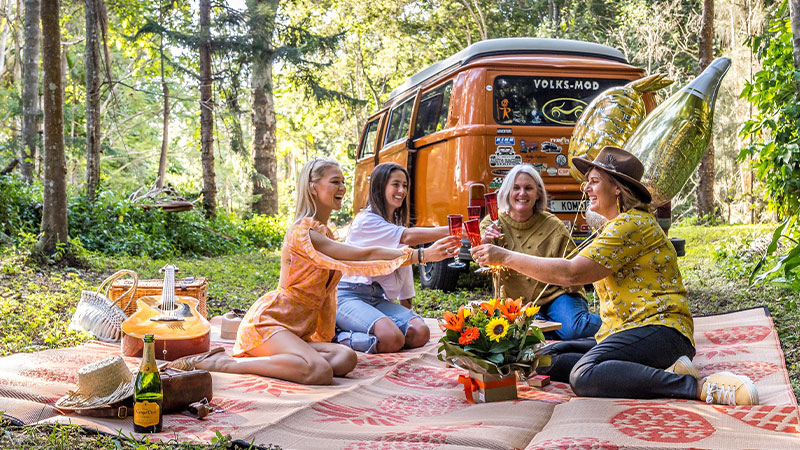

Picnic Mats
At Recycled Mats, we offer a huge selection of picnic mats and rugs that are made using recycled materials.
Our stunning range of unique designs has been created by a diverse collective of Australian, New Zealand, and Pacific Island artists, with many of our picnic mats conveying depth and meaning that extends far beyond the patterning. We also cater for a variety of sizes and shapes from classic rectangular to square and round picnic blankets.
 Product Filters
Product Filters
We pride ourselves on our picnic mats being of high quality, that are kind to both the environment and the artists behind them: from start to finish. Here are some common things you may be wondering about our picnic blankets…
What is my Picnic Rug made of?
Our recycled plastic mats have been made to the best attainable standards from UV-treated recycled Polypropylene. This gives them excellent protection from sun damage, however, we don't recommend leaving them in continuous direct sunlight as it may cause fading.
They're also mould-resistant, non-toxic, hypo-allergenic, lightweight & and reversible, making them extremely practical for taking out and about in the open air and laying on the bare earth. All of our picnic mats are also either waterproof or water-resistant, depending on the individual style, so everyone’s bottoms will stay nice and dry for the entirety of your picnic.
How Do I Clean my Picnic Mat?
The great thing about using recycled plastic is that it makes our outdoor mats super easy to clean. You can put away all the abrasive, toxic chemical cleaning products that you’d normally need for a picnic rug, and just use a broom and some water! Your plastic picnic mats can be shaken off or vacuumed for dust and dirt. For heavier soiling, take your mat outside and rinse with a hose, brushing with a soft broom if necessary.
Allow to dry on a fence or washing line, or laid out flat. We do not recommend using a Gerni or other intense water cleaner as the mat fibres can blow apart under pressure.
How Do I store my Picnic Blanket?
To store your picnic mat when not in use, we suggest that you fold it along the same fold lines with which it was delivered to you. You can see our folding videos on the product page of each recycled plastic mat - please note the instructions carefully. Our recycled picnic mats are easily stored in cupboards or the back of the car, preferably out of direct sunlight to avoid deterioration.
What about the Packaging?
We endeavour to minimise the amount of office and packaging waste wherever possible. Not only do we opt for courier bags made from recycled content but we also supply carry bags for most of our picnic mats that are also manufactured from recycled plastic or recycled polyester. Supplying beautiful products doesn’t have to cost the Earth!
Is my Picnic Rug made using ethical processes?
Here at Recycled Mats, we talk a lot about making ‘ethical mats’ but we understand that might mean different things to different people. We consider our picnic rugs to be ethically made and produced because:
- They're made from repurposed materials, like discarded shopping bags and drink bottles, as well as non-toxic dyes. They're also easy to clean and maintain, which means fewer chemical cleaning products going down the drain.
- We use authentic designs created by artists across Australia, New Zealand, Malaysia and the Pacific Islands – and we pay our artists fairly for their work.
- We support our artists who, in turn, support their communities. We also donate mats to non-profit organisations.
- We manufacture some of our products both locally and overseas. We have personally visited many of our factories in China and India and we’re confident that they support fair trade practices.
If you’d like to know more about who designs our mats or who benefits from our production methods, you can read more on our blog

























